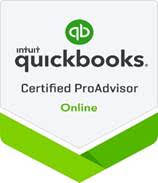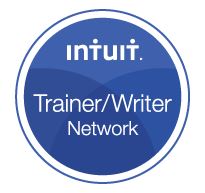Taxes 24/7/365
The reasons for putting off tax preparations are endless – and understandable. So tax filing deadlines may become the culmination of marathon sessions with your records, which can make mistakes more likely.
Conscientious daily work habits-including a constant eye on tax issues-can help prevent this painful scenario. QuickBooks offers many built-in tools to help you minimize the tax-time terrors.
Stay on Top of Your Receivables in QuickBooks 2011
Even if your sales are up, slow customer payments may be damaging your cash flow. If you often come up short when it’s time to pay your tax obligations, it may be that you’re not chasing down your receivables adequately.
QuickBooks Pro and Premier 2011 added a number of features to help with this. The new Customer Snapshot gives you instant access to key customer information; things like open balance, number of days to pay, and recent invoices and payments.
A new vertical pane next to transaction forms displays an overview of your interaction with the customer or vendor. Beyond saving the time you used to spend looking up historical information, this feature can alert you
to collection opportunities. A new Collections Center also automates e-mailed collection notices.
Older Versions’ Cash Flow Tools
Previous versions of QuickBooks also help you maximize customer payments. Enter an invoice for a customer who has outstanding time charges and/or costs, and a dialog box reminds you of that.
Also, QuickBooks’ integration with Microsoft Word makes short work of collection letters. Open the Customer Center, then click Word | Prepare Collection Letters and follow the wizard. The Payment Snapshot (Company Snapshot | Payments) is a page you should visit daily; its tables and graphs spell out who needs nudging.
Intuit also offers solutions that let you accept payments online, so you don’t have to wait for checks to arrive in the mail. Talk to us about which one might be best for you and how to get started with it.
Keep Documents Close
However you store receipts and other tax-related paper, it can be frustrating to match paper to QuickBooks data. QuickBooks 2010 introduced the ability to attach scanned documents to any screen that has the Attach icon. Using this tool faithfully will reduce the time and frustration associated with your tax preparation. Prices start at $9.95/month for one attachment per list item or transaction; 30-day free trial.
Use “Classes”
QuickBooks uses the accounts assigned to your transactions to categorize your tax-related data. You can also slice your data in additional ways by using classes to break out account balances by filters, like by departments, consultants, or locations. You must use it faithfully for it to be effective. You should also check with us before embarking on this new classification system.
First, make sure that QuickBooks is equipped to handle classes. Click on Edit | Preferences, then click the Accounting tab and Company Preferences. Click on the box next to Use class tracking if it isn’t already checked, and on Prompt to assign classes if you want QuickBooks to remind you before you save an unclassified transaction.
Go to Lists | Class List, and then click the Class tab in the lower left corner. Select New. Type your new class name in the field that appears and check the Subclass of box if you want to make this a subclass. Assign these classes in transactions where appropriate, and you’ll have neatly categorized data for the Profit & Loss by Class, Profit & Loss Unclassified, and (new in 2011) Balance Sheet by Class reports. Classes can also be displayed in other reports.
Built For Tax Reporting
QuickBooks can’t prepare your taxes for you, but these tools and more help shape your data to make tax deadlines less stressful and your returns more accurate than the days of pencil and paper.
It does so in the background by, for example, assigning your transactions to the appropriate accounts, so your reports tell the right story. Other assistance is more obvious; QuickBooks helps you print 1099s, W-2s and W-3s.
QuickBooks’ design encourages you to look at tax-related issues every day, which can be a very good thing come filing time. Take advantage of this-along with the expert advice of our offices-and you can be more confident and less frantic during your periodic interaction with the IRS.
As always, don’t hesitate to call us if you have any questions.











